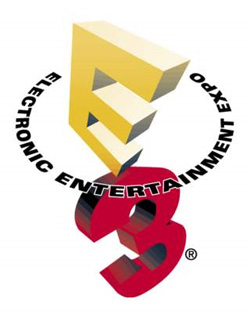 Imagine that, a well known game developer finally says what everyone has been thinking, “it’s the walking dead.” Will Wright, famous for TheSims, SimCity and upcoming Spore believes E3 is in a state now where we’ll never see the old E3 and we’ll never accept the slimmed down anorexic thing we’re getting now.
Imagine that, a well known game developer finally says what everyone has been thinking, “it’s the walking dead.” Will Wright, famous for TheSims, SimCity and upcoming Spore believes E3 is in a state now where we’ll never see the old E3 and we’ll never accept the slimmed down anorexic thing we’re getting now.
End result is simple: it’s time to move on and create a new event and begin our arms race anew. Or, bring a version of the Game Convention over here from Europe and allow a new convention group to see what they can do with it, booth babes and all.
It’s hard to argue with the sheer amount of money that was spent to “compete” at a PR level with each major publisher and console maker. However, allowing E3 to die and starting a brand new design means people will be able to think ahead of “what’s to come” before re-igniting the exact same brand under a new name. We need something as exciting and invogorating without the massive hommoraging of cash.
(Thanks, GameStooge)

 Electronic Arts is (was?) building a first-person-shooter based on the Command and Conquor series and was set to release on PC, Xbox 360 and PlayStation 3. The original title was originally slated for 2008 and now has been pushed to EA’s fiscal year 2009 or 20010.
Electronic Arts is (was?) building a first-person-shooter based on the Command and Conquor series and was set to release on PC, Xbox 360 and PlayStation 3. The original title was originally slated for 2008 and now has been pushed to EA’s fiscal year 2009 or 20010.
 Imagine that, a well known game developer finally says what everyone has been thinking, “it’s the walking dead.” Will Wright, famous for TheSims, SimCity and upcoming Spore believes E3 is in a state now where we’ll never see the old E3 and we’ll never accept the slimmed down anorexic thing we’re getting now.
Imagine that, a well known game developer finally says what everyone has been thinking, “it’s the walking dead.” Will Wright, famous for TheSims, SimCity and upcoming Spore believes E3 is in a state now where we’ll never see the old E3 and we’ll never accept the slimmed down anorexic thing we’re getting now.
I like using keyboards for racing games that have simplified acceleration, braking, reversing, and turning such as TrackMania (four keys for all), but fighters and etc. are difficult for me via keyboards.
Mice allow for more angular granularity than controllers because of the area of movement across the mousepad/surface when using an adequate sensitivity, and mice can be polled around 1KHz or more versus controllers being polled around 250Hz, as far as I know.
If mouse sensitivity is set too high above 800 CPI or so, noise becomes an issue (quantization occurs at too low of CPI), so I recommend mice equipped with the 3360/3366 sensor as the older mice with 30×30 or less pixel/photo-diode arrays might have more trouble with noise because correlation imaging sensors will always be imperfect.
Here’s a thread regarding mice with said sensors from a reputable forum:
http://www.overclock.net/t/1602282/lets-compile-all-3360-3366-and-their-release-dates-for-everyone/0_100
The reason of 800 CPI or so being the sweet spot for current mice is, each pixel on the tracking surface or “matrix” is approximately 30 microns in diameter because of the lens magnification and sensor height from the tracking surface, so 25.4mm to convert an inch / 0.030mm = roughly 846.666 of these pixels are able to fit in an inch on the tracking surface, and the aforementioned sensors should be the same.
Each pixel is divided to achieve a higher resolution, so noise becomes an inevitable issue making a larger photo-diode array more ideal.
http://www.pcgamer.com/gaming-mouse-myths-busted/#page-1